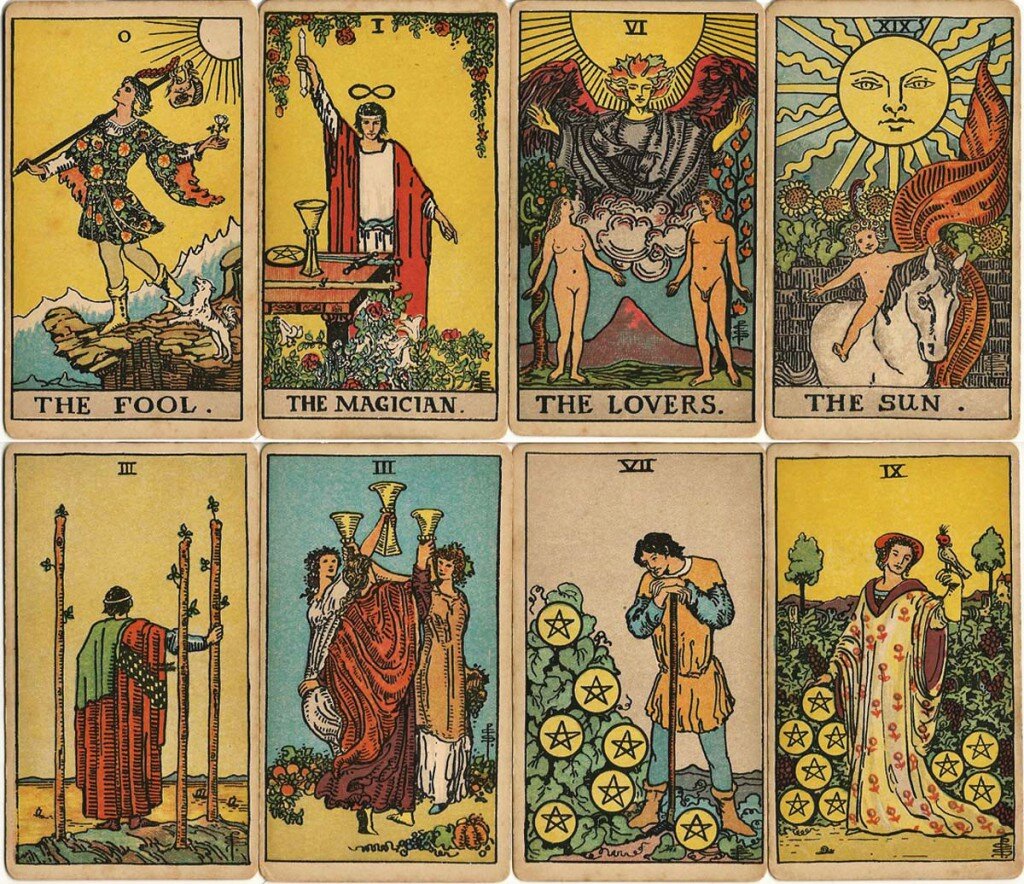Tarot & Oracle
The Tarot is at its tabletop practical basis a deck of decorated cards. Its order and appearance began to be somewhat uniform in the Renaissance, roughly the 15th Century. More complex meanings and purposes of this tool of gamesmanship seem to have begun early in the 18th Century, eventually growing and roaming into the wide spectrum of entertainment, interrogation, divination, and cartomancy that we know today.
A friend introduced me to the I Ching in college, and I quickly understood it to be an effective and enjoyable method of psychological investigation. After years of being put off by some of the more arcane and ambitious claims of tarot enthusiasts, I finally saw the analogy to the I Ching. After many years of resisting carrying the tarot in the store, I now stock it in the simple and inquiring spirit of my understanding. I am attracted to eye-catching art, of course, and I like the idea of cats being involved, of course, although I suspect cats may be more interested in pushing the cards off the table than in being supportive familiars. I respect the tarot’s history, and I will seek out books that place in the context of its origin and survival.
I am aware that the supply and diversity of decks is enormous, but I begin simply and humbly, alert to what my customers like.
Dreamscape Oracle
Dreamscape Oracle
From the creator of Ethereal Visions Tarot, Matt Hughes
Dreamscape Oracle presents 32 guides, some animal messengers, some mythological archetypes, to help us explore the liminal spaces in our lives. Together this oracle deck and 80-page guidebook allow us to interpret the messages we receive from our higher selves. This deluxe deck has gold foil stamping on the cards and box. The Dreamscape Oracle can be used as a stand-alone divination deck, or as a companion to the Ethereal Visions Tarot.




